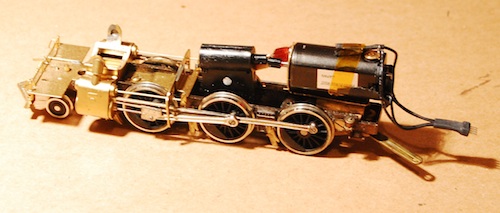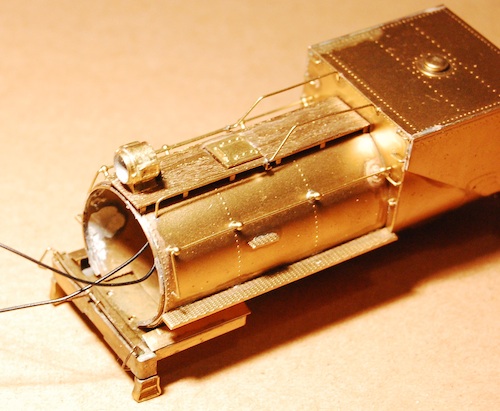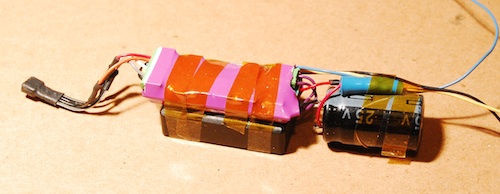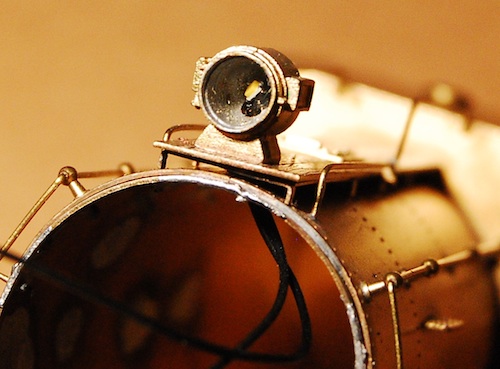I bought this locomotive in unused condition, but with its original open-frame motor. I installed a can motor before beginning the installation; the firebox is very narrow on this model, so I had to use a flat can motor intended for N-scale diesels in place of the usual 16mm can motor I'll try to use in small steam. In the mechanism photo, you can see the four pin plug I put on all my locomotives, and a single pin socket is taped to the top of the can motor for the headlight connection.

The tender on this locomotive had been completely soldered shut during assembly. The oil tank top was much nicer on this locomotive than on the Westside tenders, so unsoldering the top of the bunker looked like a bad idea. Although the tank end was soldered on, it looked like it could move a bit, so I pointed a torch at it and pried with an X-acto chisel blade, and the formed sheet end finally popped off as seen in this photo.
The tender was awfully tiny, so I was careful to keep wires between the different component routed neatly. Here, you see a Tsunami decoder in purple, with a oval speaker below it. The 4700 uF capacitor to the right keeps the decoder alive for a split second, and keeps the locomotive from stalling because of dirt on the tracks.
Headlights are always painful on small steam. I'd previously used 16 volt grain-of-wheat bulbs. Jim Betz, however, suggested trying tiny surface-mount LEDs instead. This photo shows one of the tiny, tiny, tiny LEDs installed in the headlight casting. The LED is from the LED Baron, who sells on EBay. I drilled a #57 hole at the back of the headlight casting and in the tender deck to lead the wires into the tank.